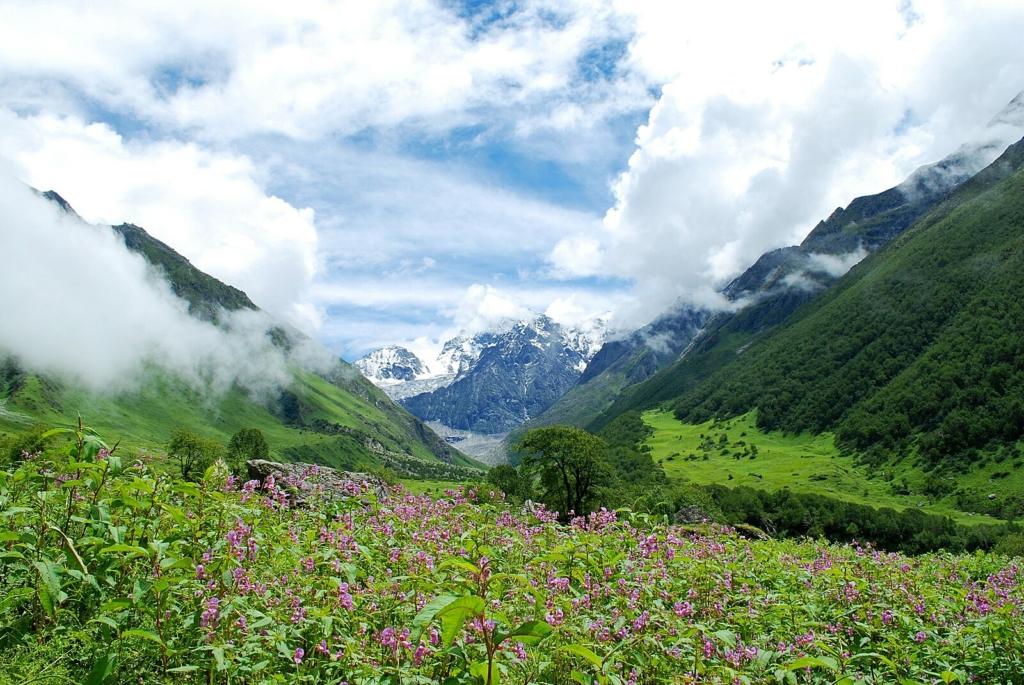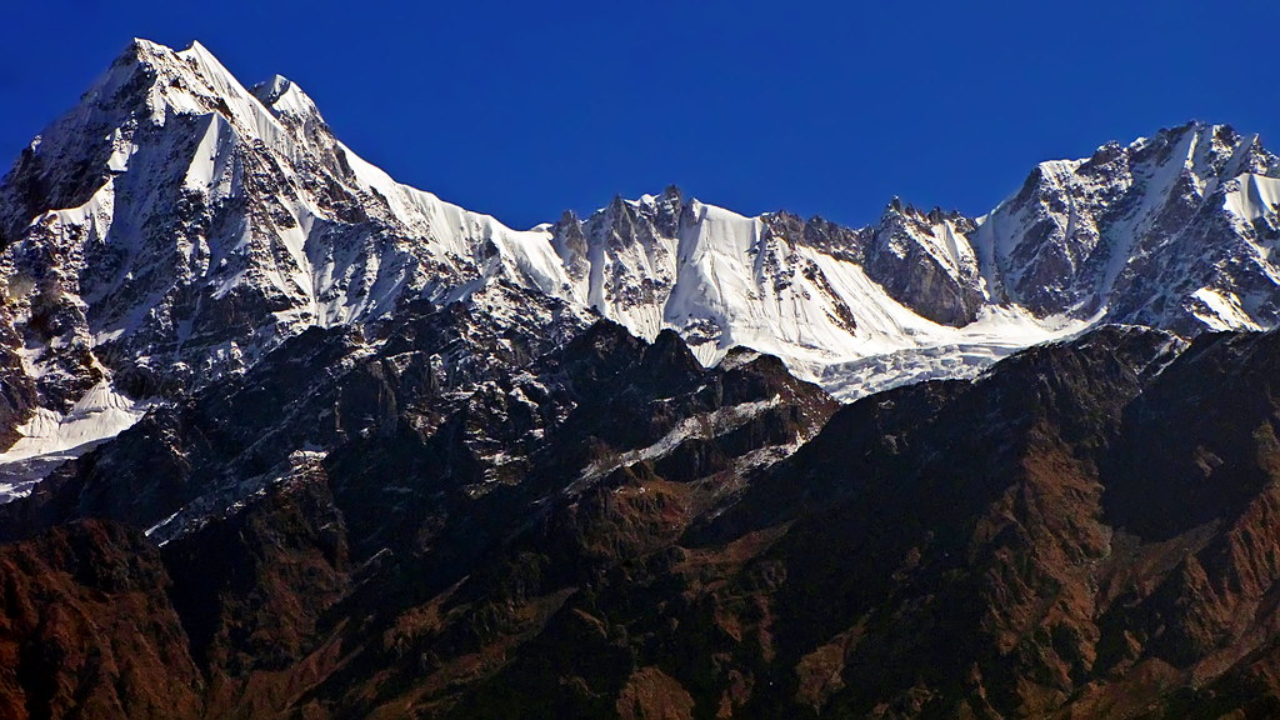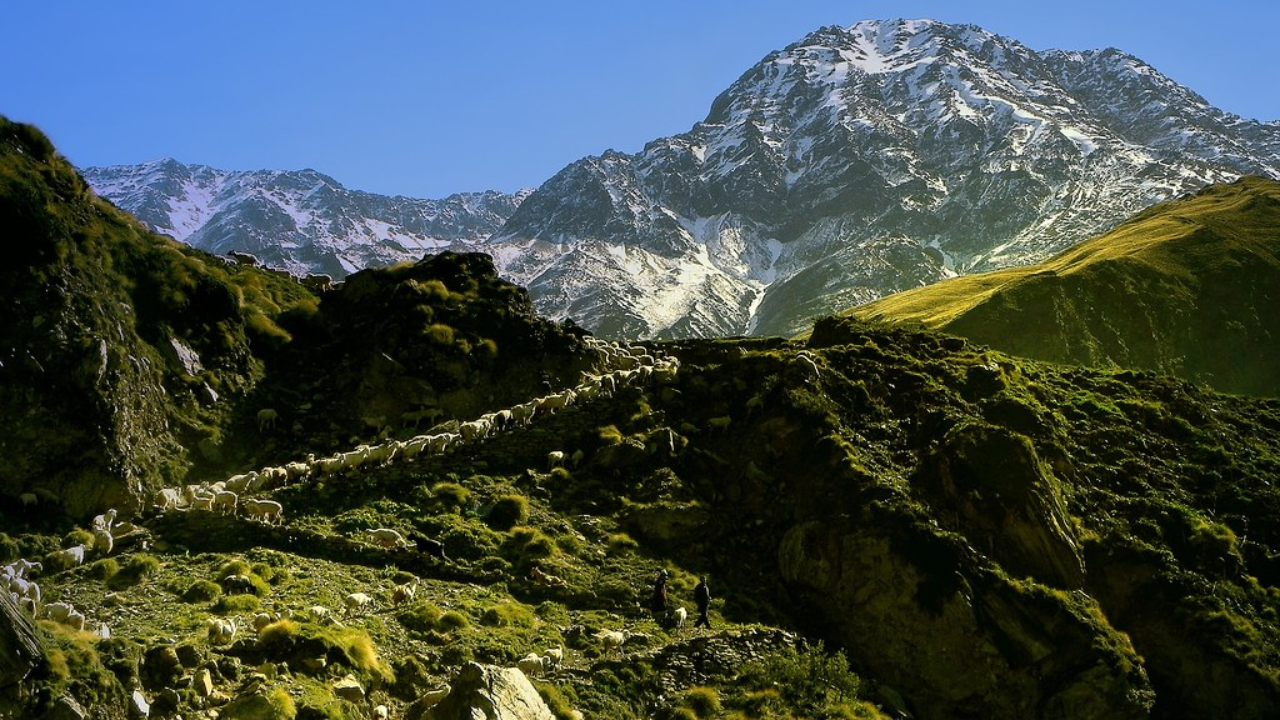Nanda Devi Sanctuary
Published on August 23, 2025
Nanda Devi Sanctuary is a rare and pristine glacial basin nestled deep within the Garhwal Himalayas of Uttarakhand, India. It is part of the larger Nanda Devi National Park and lies within the UNESCO World Heritage site known as the Nanda Devi and Valley of Flowers National Parks. The sanctuary is famed not only for its rugged mountainous terrain and stunning beauty but also for its rich biodiversity and cultural significance. At an elevation generally above 3,500 meters (11,500 feet), the sanctuary is encased by a formidable ring of snow-capped peaks, forming a natural fortress accessible only through the narrow, steep Rishi Ganga Gorge.
Geography and Location
The sanctuary covers an area of roughly 630 square kilometers inside the Chamoli district of Uttarakhand. This protected wilderness is surrounded by towering Himalayan peaks that rise between 6,000 to 7,500 meters, including Nanda Devi—the second highest mountain in India at 7,816 meters (25,643 feet). Geographically, the sanctuary is a vast glacial basin ringed by these formidable mountain ridges, forming a near-square shape:
-
The north, east, and south sides are bordered by continuous, high mountain ridges.
-
The relatively less steep western side slopes down into the Rishi Ganga Gorge—the sanctuary’s only drainage outlet.
Within the sanctuary, two major glaciers flank the central peak—Uttari Rishi Glacier to the north and Dakshini Rishi Glacier to the south each nourished by smaller glaciers around Nanda Devi. These glaciers are vital water sources feeding mighty rivers downstream.
The Nanda Devi Sanctuary is broadly divided into two zones:
-
Outer Sanctuary: The ring of mountainous walls protecting the basin, comprising peaks such as Dunagiri, Changabang, Trishul, and Nanda Kot. This ring of peaks not only creates an imposing backdrop but also limits access and human encroachment, preserving pristine ecosystems.
-
Inner Sanctuary: The high-altitude basin itself, containing the Nanda Devi peak and its glaciers. This remote core is virtually inaccessible to all but a few mountaineers and scientists due to rugged terrain and strict regulatory protections.
The sanctuary’s isolation has helped maintain its unique biodiversity, serving as a natural refuge for rare and endangered Himalayan species.

Historical and Cultural Significance
Nanda Devi holds deep religious and cultural importance for the local Garhwali and Kumaoni communities. The mountain is personified as the “Bliss-Giving Goddess” in Hindu tradition and is considered the patron deity of the region. Pilgrimages and rituals centered around Nanda Devi have been performed for centuries, intertwining spirituality with nature’s grandeur.
In the early 20th century, access to certain parts of the sanctuary started to attract explorers and mountaineers—most famously British explorers Eric Shipton and H.W. Tilman, who accessed the inner sanctuary in 1934 via the perilous Rishi Gorge. However, the region's ecological sensitivity led the Indian government to declare the sanctuary off-limits to climbers and locals in 1983 to protect its fragile environment.
The sanctuary's inclusion as a UNESCO World Heritage site in 1988 (later expanded in 2005 to include the Valley of Flowers) highlights its global ecological and cultural value.
Biodiversity and Ecology
Nanda Devi Sanctuary boasts some of the richest biodiversity of the Indian Himalayas, thanks mainly to its varied altitudinal zones and strict protection:
Flora
The sanctuary supports diverse vegetation zones, ranging from temperate forests to alpine meadows and nival (snow-covered) landscapes.
-
Lower Slopes: Dense forests dominated by deodar (Himalayan cedar), fir, oak, birch, and rhododendron.
-
Middle Elevations: Alpine meadows or bugyals covered in wildflowers and herbs during spring and summer, including rare medicinal plants.
-
High Altitudes: Sparse vegetation mostly comprising hardy alpine grasses and mosses on glaciated slopes.
The sanctuary also houses endemic plant species adapted to its unique climate and soil conditions.
Fauna
This sanctuary serves as a sanctuary for numerous rare and endangered animals native to the Himalayan region:
-
Mammals: Snow leopard, Himalayan black bear, Himalayan brown bear, musk deer, Himalayan tahr (wild goat), and langurs.
-
Birds: The region is rich in avian fauna, with sightings of Himalayan monal (the state bird of Uttarakhand), blood pheasant, snow pigeon, and several species of woodpeckers.
-
Other Wildlife: Smaller mammals, reptiles, and amphibians adapted to high-altitude environments.
Strict conservation controls and limited human interference offer these species refuge from hunting, poaching, and habitat destruction.

Climatic Conditions
The climate of the sanctuary is typical of high Himalayas, marked by severe winters and brief summers:
-
Winter (December to March): Freezing temperatures, heavy snowfall, and glacial coverage make the sanctuary inaccessible to all but scientific expeditions.
-
Summer (May to October): Mild, pleasant temperatures allow plant life to flourish and animal activity to increase. This period is best for scientific visits and limited trekking around the park’s outer zones but restricted in core areas.
-
Monsoon (July to September): The sanctuary receives significant rainfall, contributing to lush greenery but also increasing the risks of landslides and flooding in peripheral areas.
Hydrology and Rivers
The sanctuary’s glaciers are the sources of vital rivers descending into the Ganges basin:
-
The Rishi Ganga River flows through the sanctuary’s western boundary via the Rishi Ganga Gorge, carving an almost impassable defile.
-
The Dhauli Ganga and Gori Ganga rivers also have their origins here, feeding into the Alaknanda River, a primary tributary of the Ganga.
These rivers are central to the ecology, cultures, and livelihoods downstream, further emphasizing the sanctuary’s ecological importance.

Scientific and Research Importance
Because of its isolation and ecological uniqueness, Nanda Devi Sanctuary has been the focus of various scientific studies:
-
Glaciology: Monitoring the glaciers’ health and changes contributes to understanding climate change impacts.
-
Botany: Study of alpine plants and medicinal herbs with potential pharmaceutical uses.
-
Zoology: Wildlife surveys document the populations of endangered species and their behavior.
-
Ecology and Conservation: The sanctuary serves as a living laboratory to study high-altitude ecosystems, their natural balances, and responses to human influence.
Conservation efforts reflect a commitment to preserving the sanctuary’s biodiversity while balancing scientific understanding.
Visitor Access and Restrictions
The sanctuary's core zone remains largely off-limits to all except authorized researchers due to strict environmental protections. However, the surrounding Nanda Devi National Park and buffer zones allow regulated trekking and tourism:
-
Popular trekking trails include routes around the outer sanctuary walls and adjacent valleys.
-
Visitors must obtain permits, follow strict guidelines, and often use local guides to limit environmental impact.
-
The sensitive ecosystem demands responsible tourism practices to maintain the sanctuary’s pristine condition.

Surrounding Attractions and Related Reserves
The Nanda Devi Sanctuary is part of a larger mosaic of protected Himalayan landscapes:
-
Valley of Flowers National Park: Renowned for its spectacular alpine meadow flowers and high biodiversity, connected by buffer zones.
-
Nanda Devi Biosphere Reserve: Encompasses the sanctuary and surrounding areas totaling over 2,200 square kilometers.
-
Adjacent Peaks: Dunagiri, Changabang, Trisul, and Nanda Kot offer breathtaking backdrops and climbing challenges nearby.
-
Cultural Sites: Ancient temples and traditional villages lie along the peripheries, representing harmonious coexistence between humans and nature.
The sanctuary’s inclusion in this network of parks and heritage sites ensures holistic preservation and diverse visitor experiences.

Challenges and Conservation Efforts
Despite its remote location, Nanda Devi Sanctuary faces challenges such as:
-
Climate Change: Melting glaciers and altered snowfall patterns threaten the delicate alpine ecosystems.
-
Human Impact: Past mountaineering expeditions and local activities have occasionally disturbed habitats.
-
Poaching and Wildlife Protection: Illegal hunting has been curbed by patrolling and awareness campaigns.
Efforts by governmental agencies, NGOs, and international organizations focus on monitoring changes, educating local communities, and enforcing protection laws to safeguard the sanctuary’s future.
The Nanda Devi Sanctuary stands as a symbol of nature’s majesty and fragility—a sanctuary not just for wildlife but for all who seek to understand the timeless heritage of the Himalayas. This hidden alpine realm offers glimpses into an untouched world, inspiring reverence and a call for preservation.
